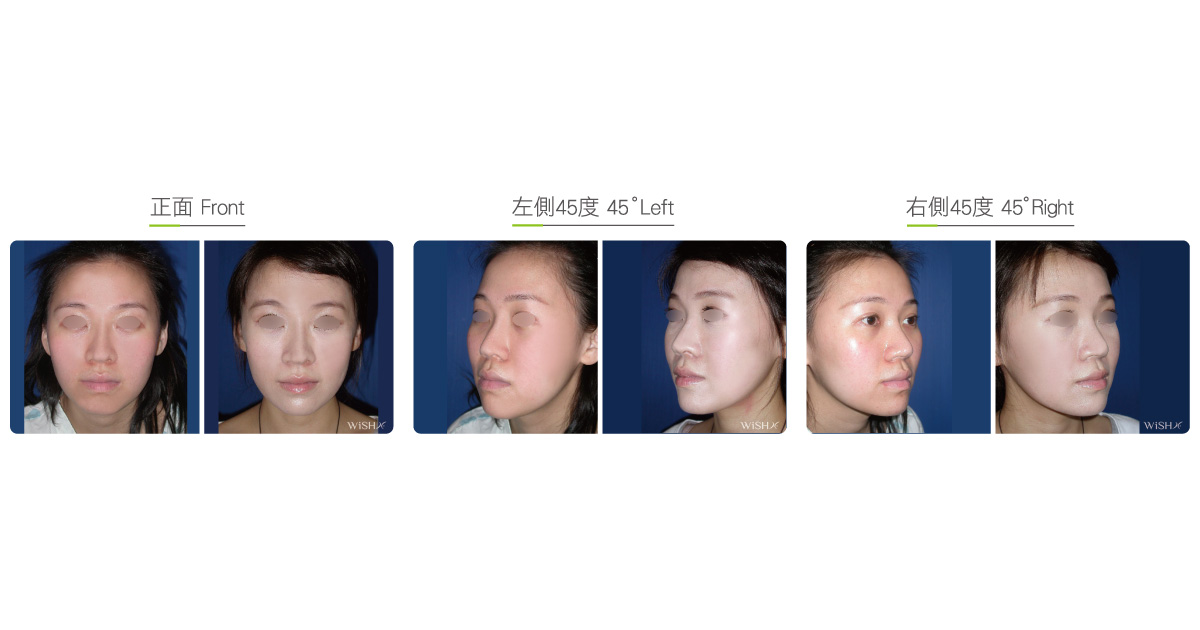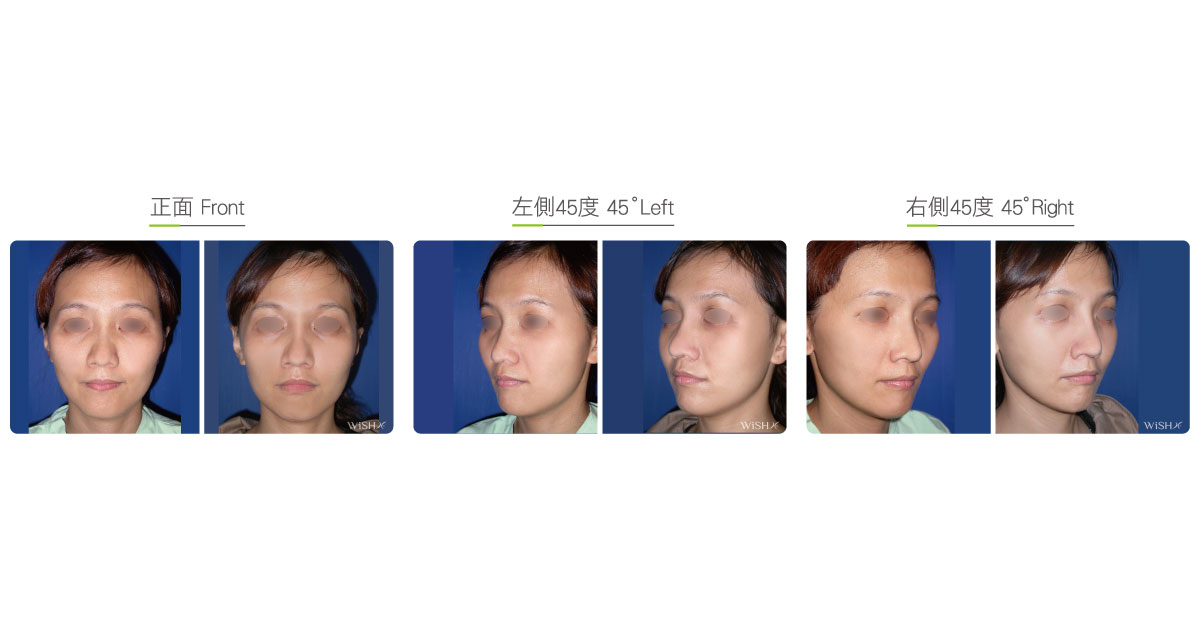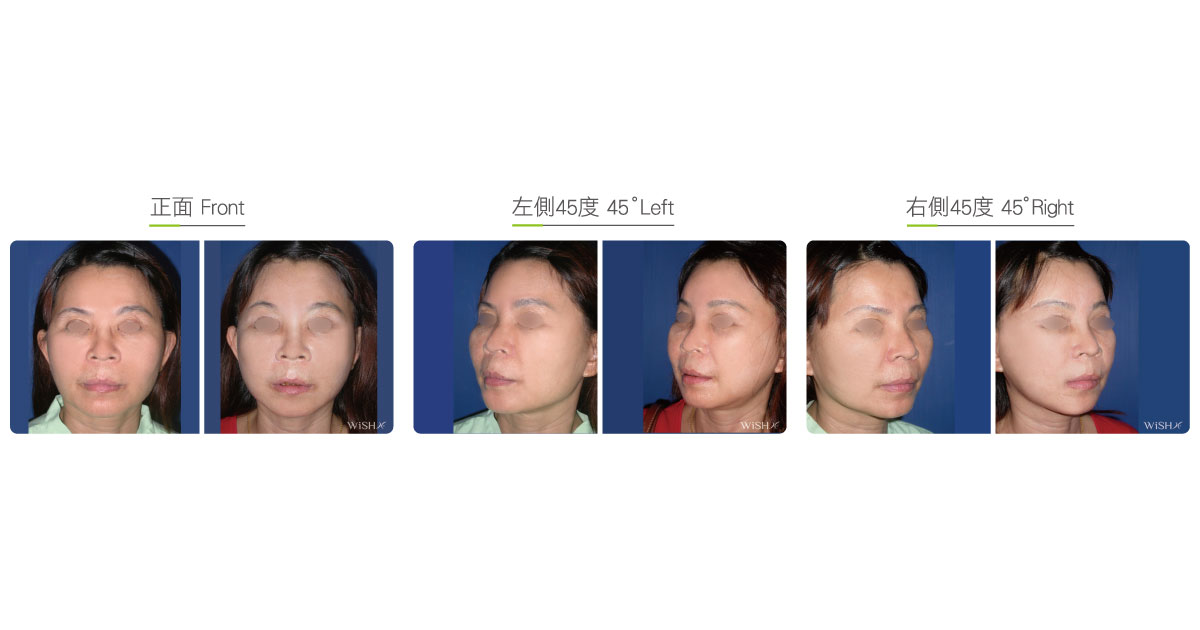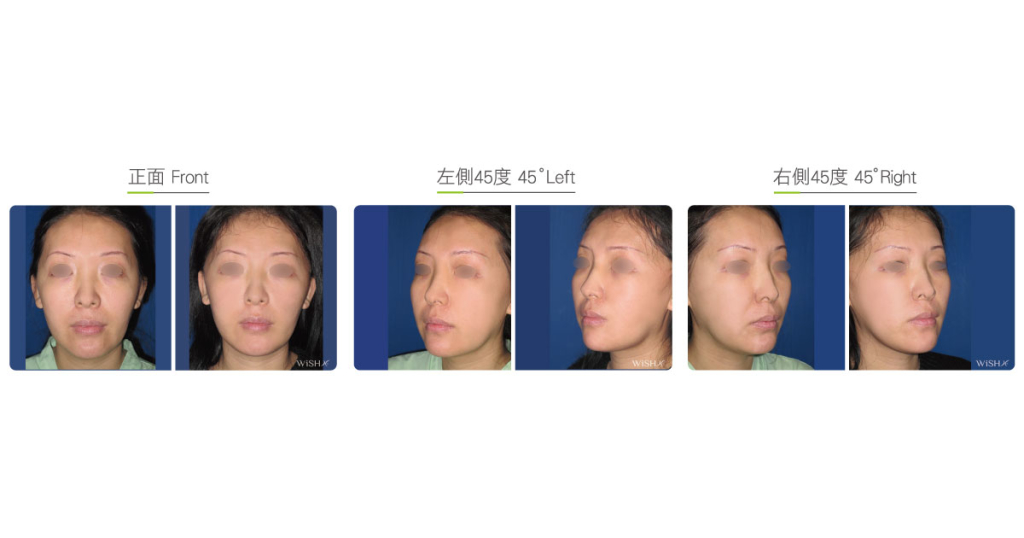Regional Midface Lift
This surgery is also called “temporal fascia lift;” it is currently a novel scar-hidden facelift procedure, and the main goal is preventing and treating the sagginess of the cheeks and side face caused by zygomatic bone reduction. After cutting open a 2cm incision on the scalp medial to the temporofrontal hairline, Dr. Chuang will detach and release the superficial skin and deep temporal fascia. In the 45° superolateral direction, the whole unit of the cheek skin together with the superficial fascia near the zygomatic bone are lifted to the inside of the scalp, and extra scalp tissues are resected and sutured. Finally, Dr. Chuang will proximally fix the distal skin on the deep temporal fascia with non-absorbable lift sutures. In this manner, the sagging deep nasolabial folds or lateral cheeks can be improved; this surgical result will last for 3–5 years.
In conclusion, this procedure can be simultaneously performed with cheekbone reduction to postoperatively prevent potential skin looseness or be independently performed to resolve the late complication of cheek sagging to confer the effective facial contouring results.
Surgical conditions
Duration
- Type of anesthesia: IV sedation or general anesthesia
- Type of incision: Within the temporofrontal scalp (2–3 cm)
- Recovery: 2–3 days
- Removal of stitches: 10–14 days
General instructions
No food and water on the surgery day
- Exposure to cold water or hair washing should be avoided for 5 days postoperatively.
- Hair dying or perms should be avoided for 2 months postoperatively.
- Pulling the face, as in the case of cosmetic skin care, should be avoided for 3 months postoperatively.
- The area around the wound should not be scratched to prevent hair loss for 6 months postoperatively.
- Hair nourishment or growth products can be used to treat hair loss.
Ideal candidates
- Those whose cheeks can show sagging after cheekbone reductions.
- Those whose skin can become loose when the zygomatic bone is reduced by more than 1 cm on one side.
- Those who already have chubby or loose cheek skin before surgery.
- Those with cheekbone reduction who are≥35 years old.
- Those who will show premature skin sagging shortly after surgery.
- Those with complications of skin loosening or cheek sagging after previous zygomatic bone reductions.
Potential complications
- Poor wound healing
- Hair loss
- Temporary scalp numbness
Surgical advantages
-
Surgical results show up quickly.
-
Surgical scar is hidden by the scalp and is almost invisible.
-
It can be combined with cheekbone reductions to simultaneously improve the problems of skin and bones.
-
Will avoid or prevent potential skin loosening after zygomatic bone reduction.
-
Will make the skin tighter after cheekbone reduction to create a younger appearance.
-
Will delay the process of premature skin aging due to zygomatic bone reduction.
-
Repeatable in the future.
Surgical drawbacks
-
The surgical results will last for a short time (approximately 3–5 years).
-
There will be hair loss around the scalp incision.
-
The surgical results can vary depending on individual skin thickness and elasticity.
-
Rarely, a long-lasting edema, which is caused by combined cheekbone reduction, can cause skin loosening.







